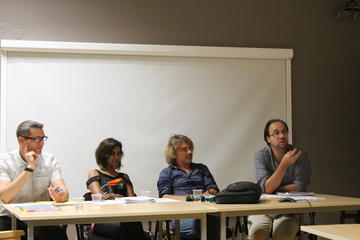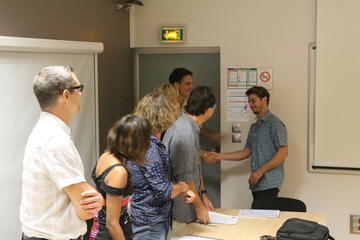PhD work brings new knowledge on pineapple Fruitlet Core Rot (FCR) disease
Since 2014, Bastien has been conducting research at the CIRAD in La Réunion (QualiSud unit) under the supervision of Marc Chillet and Sabine Galindo, both from QualiSud unit. During his thesis, Bastien had the opportunity to make several missions abroad in partners universities. In February and March 2016, he collaborated with the Phytopathology Department of the University of Stellenbosch in South Africa to compare the species of fungi present on Reunion island with South African stumps. In April 2017, he conducted a characterization of fungal species infecting Mauritian pineapples as well as virulence tests at the University of Mauritius.These missions were part of his doctoral program at the Agreenium International Research School.
Abstract
Fruiltet core rot (FCR) disease affects the fruits of mature pineapples. Current disease controls are not available. A deeper knowledge of the pathosystem is needed to find an effective means of control FCR.
A diagnostic survey conducted with producers during the southern winter revealed a prevalence of the disease of 74%. Pathogenic fungi belong to several species: Fusarium ananatum (72% isolates), Talaromyces stollii (21%), F. oxysporum (6%) and F. proliferatum (1%). Their toxinogenic potential was determined. Fusarium fungi produced mycotoxins identified as fumonisins FB1, FB2 and beauvericin. On a pineapple culture medium, a concentration of beauvericine of 34959 μg kg-1 was measured for the species F. proliferatum.
A method of inoculating Fusarium ananatum directly into the parenchyma allowed to describe the biochemical response of the fruit. The phenylpropanoids pathway is involved, particularly with the elicitation of caffeoylisocitrate and coumaroylisocitrate in the infected zone. A comparison of the metabolic profiles shows that the response to inoculation of resistant cultivar 'MD-2' is higher than in the sensitive cultivar 'Queen'. Most of the metabolites elicited by the attack are already present in healthy mature fruits of the resistant variety. The antifungal potential of the phenolic compounds was evaluated. Coumaric, caffeoylquinic and ferulic acids inhibit mycelial growth at concentrations similar to those found in infected fruits.
An imaging approach allowed to characterise the anatomy of the fruits of the two cultivars especially imperfect sepal and bract fusion in susceptible cultivar ‘Queen’ and to identify the key roles played by nectaries and carpel margins in the infection and colonization process of Fusarium ananatum.


